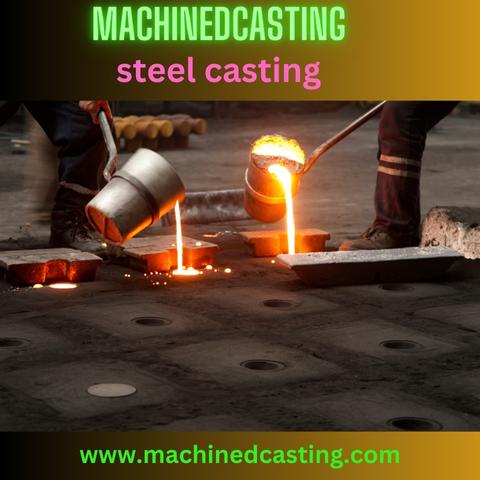Steel casting is a crucial manufacturing process that involves pouring molten steel into a mold to create complex shapes and structures. This guide aims to provide a comprehensive overview of steel casting, covering everything from the basics of the process to advanced techniques and considerations.
-
Understanding Steel Casting:
- Steel casting is a method of forming steel into desired shapes by pouring molten steel into a mold.
- It offers several advantages, including the ability to create intricate shapes, excellent surface finish, and high strength.
-
The Steel Casting Process: a. Pattern Making: The process starts with the creation of a pattern, which is an exact replica of the desired final product. b. Mold Making: The pattern is used to create a mold, typically made of sand or other materials capable of withstanding high temperatures. c. Melting and Pouring: Steel is melted in a furnace and poured into the mold cavity. d. Cooling and Solidification: Once poured, the steel cools and solidifies within the mold. e. Removal and Finishing: After cooling, the casting is removed from the mold, cleaned, and finished as required.
-
Types of Steel Casting: a. Sand Casting: This is the most common method, where the mold is made of sand. b. Investment Casting: Also known as lost-wax casting, it involves creating a wax pattern that is melted away when the steel is poured. c. Die Casting: Molten steel is injected into a mold cavity under high pressure, suitable for high-volume production of small to medium-sized parts.
-
Materials Used in Steel Casting:
- Various grades of steel can be used, depending on the requirements of the final product.
- Alloying elements such as chromium, nickel, and molybdenum can be added to enhance properties like strength, corrosion resistance, and heat resistance.
-
Considerations for Successful Steel Casting: a. Design: Proper design considerations are crucial for ensuring the castability of the part and minimizing defects. b. Material Selection: Choosing the right steel grade and alloying elements is essential for meeting performance requirements. c. Process Control: Maintaining proper control over parameters such as temperature, pouring rate, and mold quality is vital for producing high-quality castings. d. Post-Casting Treatment: Heat treatment and other post-casting processes may be required to achieve the desired mechanical properties and surface finish.
-
Quality Control in Steel Casting:
- Inspection techniques such as visual inspection, radiographic testing, and ultrasonic testing are used to detect defects and ensure quality.
- Process monitoring and documentation are essential for traceability and continuous improvement.
-
Environmental Considerations:
- Steel casting processes can have environmental impacts, such as emissions of greenhouse gases and waste generation.
- Implementing sustainable practices, such as recycling scrap steel and optimizing energy usage, can help minimize these impacts.
Conclusion: Mastering steel casting requires a combination of technical expertise, careful process control, and attention to detail. By understanding the fundamentals of the process, materials, and considerations for quality and sustainability, manufacturers can produce high-quality steel castings that meet the demanding requirements of various industries.


No comments yet